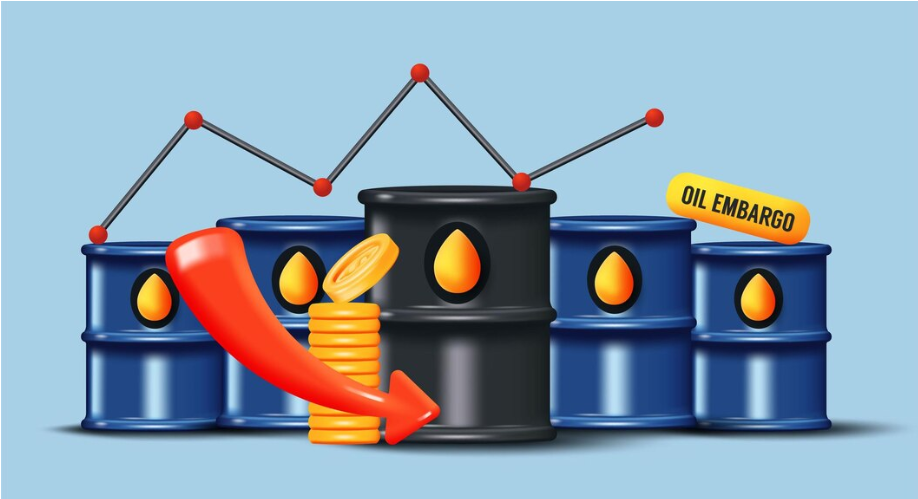Oil and gold—two of the most valuable commodities globally. These resources don’t just impact specific industries; they shape economies, influence policies, and affect the financial markets. If you’re in the trading game or even just curious, understanding oil and gold market indicators can provide crucial insights. So, let’s dive into the “big picture” on how these two powerful markets work, what drives them, and how you can use these indicators to make informed decisions.
Why Oil and Gold Matter in Trading
For financial analysts, traders, and researchers, oil and gold markets hold significant influence. Oil, sometimes called “black gold,” is the lifeblood of the global economy, fueling everything from transportation to manufacturing. Gold, on the other hand, is a traditional “safe-haven” asset, valued for centuries as a store of wealth, especially in turbulent times. By understanding what affects their prices, you can get a clearer view of market trends.
Key Market Drivers for Oil and Gold
Before diving into how to read these indicators, let’s touch on some factors that drive oil and gold prices. Knowing what moves these markets can give you a head start.
- Supply and Demand: Like any commodity, oil and gold are highly sensitive to supply and demand changes.
- Geopolitical Events: Wars, sanctions, and even OPEC meetings can swing oil prices. For gold, political instability often makes investors flock to it.
- Economic Data: Indicators like inflation rates, interest rates, and GDP growth can boost or drop the demand for these assets.
- Currency Strength: Oil and gold are priced in U.S. dollars, so fluctuations in the dollar’s value directly impact their prices.
Reading Oil Market Indicators
Let’s start with oil. The oil market can be complex, but keeping an eye on a few indicators can help traders navigate its volatility.
1. Crude Oil Inventories
The weekly U.S. Crude Oil Inventories report shows how much oil is stored across the country. When inventory levels rise, it can indicate lower demand, pushing oil prices down. A decline in inventories usually suggests increased demand, driving prices up. Simple enough, right?
- Example: If crude oil inventories drop, it could mean there’s less oil available, which usually increases the price.
2. OPEC Announcements
OPEC (Organization of the Petroleum Exporting Countries) is a major player in the oil market. The group meets regularly to discuss oil production targets, which affects global supply. If OPEC announces cuts in production, expect oil prices to go up. If they increase production, prices might dip.
- Example: A decision to cut oil output in response to global demand can cause prices to spike, making it a great time to buy.
3. Geopolitical Tensions
Oil-producing regions are often prone to conflict, which can restrict oil supplies. Anything from political instability to sanctions can affect the market. For instance, if there’s tension in the Middle East, traders might expect oil prices to rise due to potential supply disruptions.
- Example: News of a conflict in a major oil-producing region may signal a price increase, as traders anticipate lower output.
Understanding Gold Market Indicators
Gold’s a bit different. It’s known as a safe-haven asset, which means investors flock to it when they’re worried about economic stability. Let’s look at some indicators to keep on your radar.
1. Inflation Rates
Gold is often seen as a hedge against inflation. When inflation is high, the value of currency tends to fall, which makes gold more attractive as a store of wealth. Keeping an eye on inflation rates can give clues to potential gold price movements.
- Example: If inflation rates start rising, investors might shift to gold to protect their wealth, boosting demand and price.
2. U.S. Dollar Strength
Since gold is priced in dollars, any shift in the dollar’s value impacts gold prices. A weaker dollar makes gold cheaper for other countries, which can increase demand. Conversely, a stronger dollar tends to bring gold prices down.
- Example: If the dollar weakens, international buyers may find gold more affordable, increasing its price.
3. Interest Rates
When interest rates rise, holding onto non-yielding assets like gold becomes less attractive, often causing gold prices to drop. Lower interest rates can have the opposite effect, making gold a more appealing investment.
- Example: If the Federal Reserve announces a rate cut, traders might expect gold prices to rise as investors look for alternative assets.
How FXpricing Helps You Keep Track of Oil and Gold
Now, if you’re trying to track all these indicators on your own, it can be overwhelming. Here’s where FXpricing comes in. At FXpricing, we offer tools that bring all the essential data right to your fingertips.
Real-Time Data and Analysis
- FXpricing provides live data on oil, gold, and other commodities, making it easy to track real-time price changes and trends. No more guessing—you’ll have the data you need when you need it.
Customizable Dashboards
- Set up dashboards tailored to your preferences, so you can monitor the indicators that matter most to you. This customization is ideal for traders looking to specialize in certain markets or assets.
Economic Calendar
- Stay ahead of market-moving events with FXpricing’s economic calendar, which includes key dates and announcements that could impact oil and gold prices. Never miss another OPEC meeting or Federal Reserve update.
Personal Take on the Oil and Gold Markets
From my perspective, trading oil and gold is both an art and a science. It’s about finding that balance between data and intuition. While indicators are essential, it’s equally important to feel the market’s pulse. I think there’s something about following these two markets that gives you a broader view of the global economy.
FAQs
1. Why are oil and gold prices often linked?
Oil and gold are both key commodities, and their prices are impacted by economic and geopolitical events. In times of crisis, gold prices often rise, while oil can be more volatile.
2. How do inflation and interest rates affect gold prices?
High inflation increases demand for gold as a store of wealth, pushing prices up. Conversely, high-interest rates can reduce gold’s appeal since it doesn’t pay dividends.
3. Why do geopolitical events impact oil prices?
Oil is produced in regions prone to instability, so any disruption can impact supply. When traders anticipate lower output, they often bid prices higher in response.
4. What makes FXpricing valuable for commodity traders?
FXpricing provides real-time data, customizable dashboards, and a comprehensive economic calendar, making it easy for traders to stay informed and strategize effectively.5. Is it possible to predict oil and gold prices accurately?
While no prediction is foolproof, understanding indicators like supply and demand, interest rates, and geopolitical events can improve your market insights and trading decisions.




